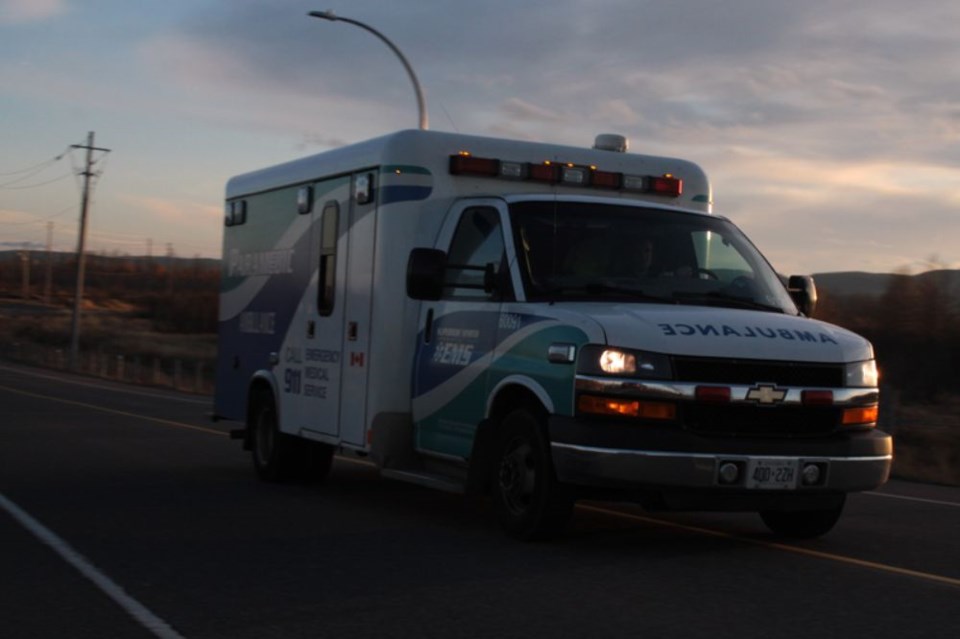THUNDER BAY -- When the local ambulance service declared this week that it intends to stop making a priority of non-urgent patient transfers, it was an ultimatum long in the making.
Superior North EMS declared an Apr. 1, 2017 deadline for performing non-urgent transfers within Thunder Bay on demand, most of which involve transporting patients between the Thunder Bay Health Sciences Centre, St. Joseph's Care Group facilities, long-term care homes and specialist offices.
The organization spoke out about the issue five years ago and a private patient transfer company has been waiting 10 years for its business to pick up but ambulance resources are now running so thin that EMS feels it has no choice.
According to Superior North EMS figures, its total call volume has increased 18 per cent over the past four years, a difference of 4,000 calls. The increase forced EMS to call in additional shifts on over 100 occasions last year.
It's now performing 246 non-urgent calls per month, an average of eight per day. By Apr. 1, it intends to perform no more than 10 non-urgent transfers per day.
Superior North EMS deputy chief Don Stokes is looking to increase available ambulances from four to six and he can't see that being possible if his service is expected to conduct hour-long, non-urgent transfers.
He has a clear hope for how the health system will proceed.
"We're looking for the for-profit company to deal with it -- not us. We want to focus on our emergency calls," Stokes said.
For-profit stretcher transfer company Ambutrans first established in Thunder Bay in 2007. Its president David Allin said Superior North EMS was a "significant player" in attracting the company to the city.
Allin has seen similar scenarios play out across the province where increasing demand for ambulance services has ushered in an increasing market for private patient transfers.
"The original concept was, we'd eventually be taking over the entire complement of non-emergency calls so I can understand their frustration," Allin said.
"What's happening now has been coming for a long time."
Superior North EMS is funded 50 per cent through the Ministry of Health and 50 per cent through Thunder Bay District municipalities. Hospital president Jean Bartkowiak said inter-facility transfers are billed to the hospital's operating budget when they're performed through a private sector provider.
"In part (it's) because we don't get charged for it whereas Ambutrans, we have to pay for it," he said.
"It was a service that, maybe at a time when EMS was not as busy with urgent cases, they had some free time -- and they will still provide that service -- but it will mean my staff will have to exercise more caution in determining who really needs the specialized care of paramedics and who will be accommodated in an Ambutrans transfer."
Bartkowiak added the hospital will raise the issue during 2017 budget meetings with the North West Local Health Integration Network (LHIN), the regional arm of the Ministry of Health that sets hospital budgets.
When Superior North EMS was designing its 2013-2017 strategic plan in 2012, it proposed several solutions to the North West LHIN, including increasing hospital funding to have private companies provide the service.
The LHIN commissioned a report into the financial implications of EMS' recommendations. It concluded financial constraint wouldn't allow for any change to non-urgent patient transfer. The LHIN board approved that report and its administration committed to looking for additional dollars that could be applied to that envelope.
LHIN CEO Laura Kokocinski said nothing has yet come of those efforts but she said she would be "very concerned" if a solution can't be reached before the April 1 deadline.
"We've now been looking at that particular proposal again to determine what additional costs might be required because it has been a couple of years since that was done and we're engaged in discussions with our partners, including the ministry about how we could be able to move forward, whether we use that full report or whether we look at different models as we move forward," Kokocinski said.
EMS intends to present a report to city council providing details about the changes it intends to make to staff deployment in the spring. Allin and Ambutrans are more than ready to take the business, if and when the opportunity presents itself. .
"Ambutrans is willing, able and available to pick up whatever EMS may be walking away from," Allin said.
"It's not that the public is going to be left in the lurch. The only kicker is someone, at the end of the day, has to cover the cost. That's what council is going to have to decide."
